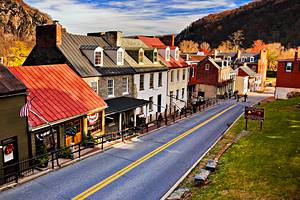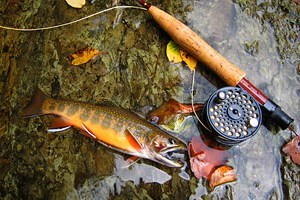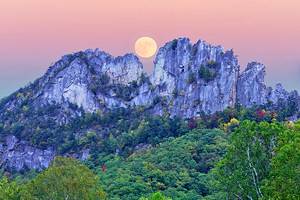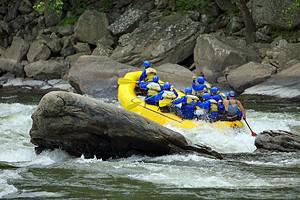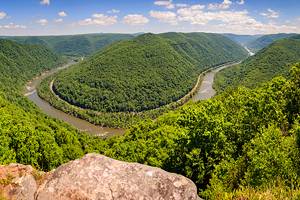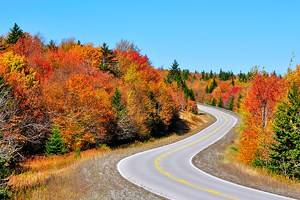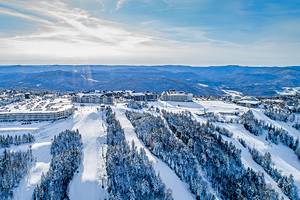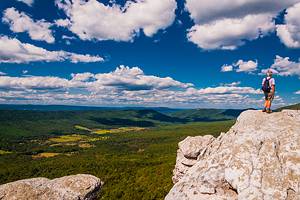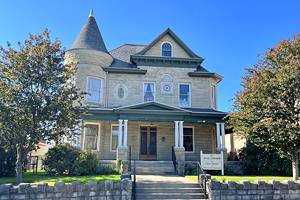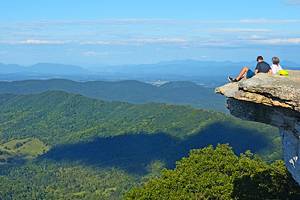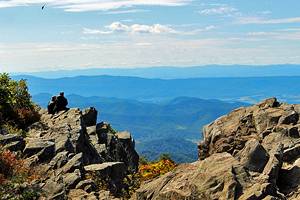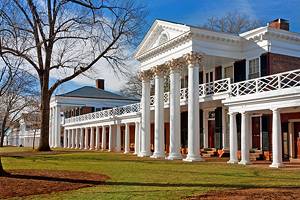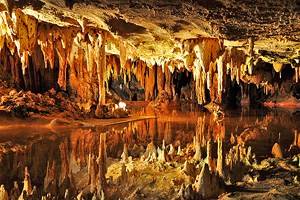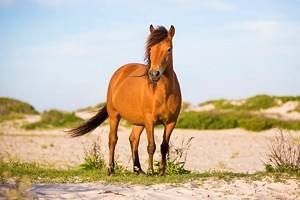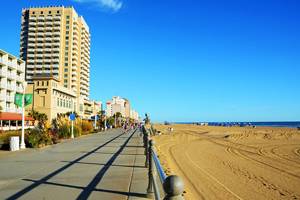Attractions & Places to Visit in West Virginia
With some of the East Coast's most beautiful and rugged scenery, West Virginia is filled with year-round outdoor adventure opportunities. Its wild mountain country, densely-forested wilderness areas, and fast-running rivers are playgrounds for hiking, camping, caving, rock climbing, white water rafting, boating, and fishing. In the winter, ski resorts offer a range of snow sports.
Active travelers will never run out of things to do here. While many tourists come to the state for these outdoor activities and scenic landscapes, West Virginia offers much more in the way of tourist attractions, from the historic sights of Harpers Ferry and the elegant Greenbrier and its legendary golf courses to some very unusual attractions, including a penitentiary to tour.
You'll find plenty of vacation ideas with our list of the top tourist attractions in West Virginia.
- Blackwater Falls State Park
- Monongahela National Forest and Seneca Rocks
- The Greenbrier
- Ski & Play at Snowshoe
- Berkeley Springs
- New River Gorge National River
- White Water Rafting
- Harpers Ferry
- West Virginia Penitentiary
- Mothman Museum and Festival
- Cass Scenic Railroad State Park
- West Virginia State Museum at the Culture Center
- Explore Seneca Caverns
- Huntington Museum of Art & Ritter Park
- Beckley Exhibition Coal Mine
- Grave Creek Burial Mounds
- Cathedral Falls
- West Virginia State Capitol
- Trans-Allegheny Lunatic Asylum
Blackwater Falls State Park
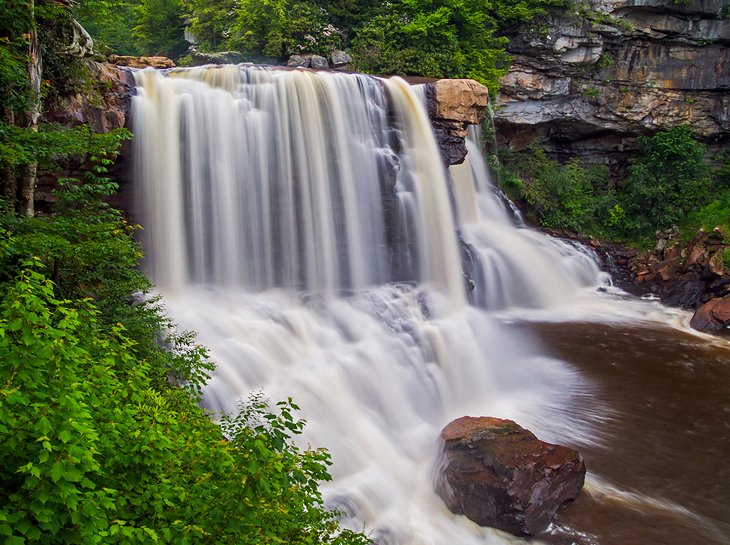
Named for the dark waters of the Blackwater River, colored by tannic acid from fallen hemlock and red spruce needles, Blackwater Falls drops 60 feet over sandstone ledges before the river continues to rush through an eight-mile-long gorge. Steps and viewing platforms make the falls accessible year-round.
Also popular places to visit in the park are Elakala Falls, which cascade down the wall of the canyon and can be reached by a short trail, and Pendleton Falls, easily seen from a roadside pull-off.
The view into the Blackwater Canyon from Lindy Point, one of the most beautiful places in West Virginia, is another park highlight, as is Pendleton Point Overlook, at the canyon's deepest point. The park has a boating lake, as well as swimming, fishing, and camping.
Address: 1584 Blackwater Lodge Road, Davis, West Virginia
Official site: http://www.blackwaterfalls.com/
Monongahela National Forest and Seneca Rocks

With elevations ranging from around 1,000 feet to 4,863 feet above sea level, the Monongahela National Forest offers beautiful views, wildlife, and the highest point in the state. The variety of terrain and rainfall across its more than 900,000 acres gives it one of the most diverse forest ecosystems in the country, supporting more than 225 bird species; 75 species of trees; and 70 fish species, both game and non-game.
About 100,000 acres of the park are designated as the Spruce Knob-Seneca Rocks National Recreation Area, offering some of the best traditional multi-pitch technical climbing on the east coast. Seneca Rocks is a distinctive 250-foot-deep formation of white and gray quartzite that stands almost 900 feet above the North Fork River. Some routes are moderate, but experts are challenged by the exposed summit pinnacle.
You don't need to be a climber to enjoy the park. Non-climbers can visit the Seneca Rocks Discovery Center, stay in the campgrounds at Seneca Shadows and Big Bend, go fishing, or hike and spot birds in the park's thousands of acres of wildlands.
Address: 200 Sycamore Street, Elkins, West Virginia
Official site: http://www.fs.usda.gov/mnf
The Greenbrier

The Greenbrier has earned its designation as a National Historic Landmark several times over. Located at White Sulphur Springs, which have been in use as a natural spa since the 1700s, the grand hotel has hosted 26 presidents, foreign dignitaries, and royalty, including Prince Rainier and Princess Grace of Monaco and the Duke and Duchess of Windsor.
But however grand and luxurious it is as a resort, it has played other historic roles, too. Early in World War II, it was used as a detention center for German and Japanese diplomats who were in the United States when war was declared. Later in the war, it was commandeered by the U.S. Army to use as a hospital, where nearly 25,000 patients were treated.
During the Cold War, an underground shelter was built to house the entire U.S. Congress in case of nuclear attack. This shelter, given the code name "Project Greek Island," was decommissioned in 1992 and is open to the public for tours, as is the Presidents' Cottage Museum, with exhibits about presidential visits and the history of the resort.
More than 50 different activities are available in the resort and in the 5,100-acre Greenbrier State Forest. Along with horseback riding, indoor and outdoor tennis courts, adventure courses, and a 40,000-square-foot spa, the resort has multiple golf courses (even an indoor one for winter) and a distinguished golf history as the venue for numerous championships.
Greenbrier State Forest offers cabins and campsites, swimming, fishing, bike trails and hiking - the 78-mile-long Greenbrier River Trail is a multi-purpose rail trail that is also used for cross-country skiing in the winter. A getaway in one of the centuries-old Legacy Cottages is one of the most romantic things to do in West Virginia.
Address: 300 W. Main Street, White Sulphur Springs, West Virginia
Ski & Play at Snowshoe
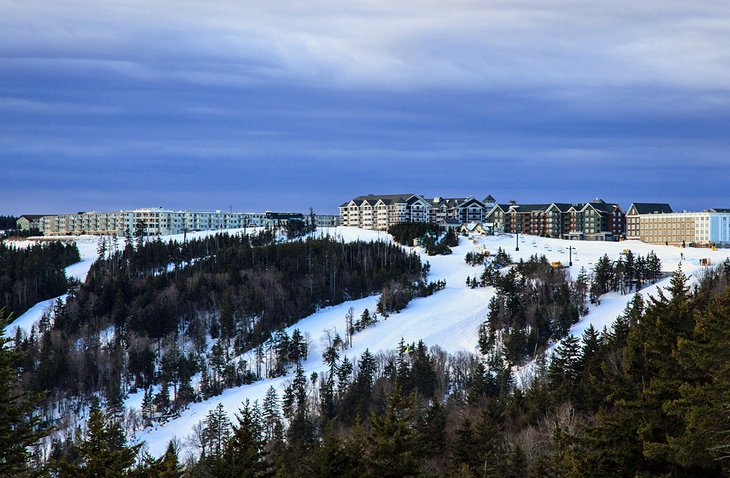
This year-round resort is best known for its skiing, with three separate areas to choose from, all with 100 percent snowmaking. With an 800-foot vertical drop, Snowshoe Basin's 38 trails cover all experience levels, served by seven lifts, including a high-speed detachable quad. Of Silver Creek's 18 trails, 12 are open for night skiing.
The Western Territory Area's steep, rugged terrain has 1,500 feet of vertical drop, the most advanced terrain in the region. Steeps on Cupp Run, designed by legendary Olympian Jean-Claude Killy, and Shay's Revenge reach 52 percent pitch.
In other seasons, activities include mountain biking, scenic chairlift rides, geocaching, horseback riding, Segway tours, ziplining, trampolining, climbing, pedal boats, paddle boarding, canoeing, hiking, fishing, and golf at the Raven Golf Club. Not far away, in Greenbank, is the National Radio Astronomy Observatory.
Address: 10 Snowshoe Drive, Snowshoe, West Virginia
Official site: http://www.snowshoemtn.com
Read More: Ski Resorts in West Virginia
Berkeley Springs
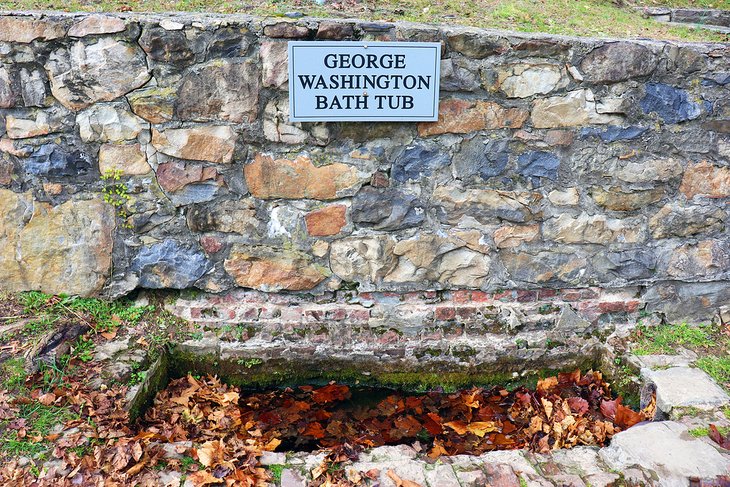
The bathhouse at Berkeley Springs State Park, in the center of Berkeley Springs, first opened in 1930, but long before that bathing in the warm and effervescent mineral waters was popular. George Washington was a regular visitor and even earlier, the springs' restorative and therapeutic properties brought Native Americans here from as far away as southern Canada.
Baths and treatments take advantage of the five main springs and several smaller ones, flowing at a rate of 2,000 gallons of clear, sparkling water per minute at a constant 74.3 degrees Fahrenheit.
Located in the center of the small town of Berkeley Springs, the state park facilities include the old-fashioned private bathing tubs, saunas, and massages at the Old Roman Bath Building and Main Bath House; elsewhere in town are more luxurious private spas with a range of health and beauty options.
New River Gorge National River
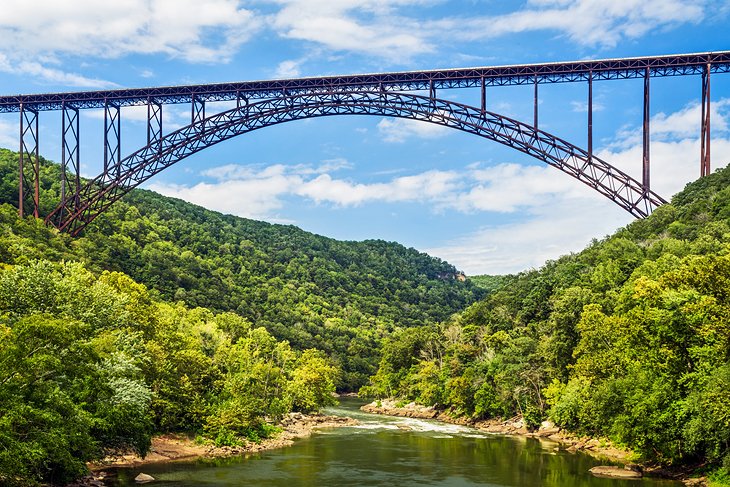
Contrary to its name, New River is actually one of the oldest rivers on the continent. As it flows into West Virginia, it cuts through the Appalachian Plateau, forming the New River Gorge and plenty of white water for tubing, rafting, and canoeing. Other recreational opportunities are all around it: hiking, ziplining, hunting, fishing, bird-watching, camping, biking, and rock climbing.
One of the state's most photographed sights is the soaring New River Bridge, the longest steel span in the hemisphere and the nation's third highest, 876 feet above the canyon floor. The National Park Service maintains 70,000 acres of park lands along the river, and at Hawk's Nest State Park, you can ride an aerial tramway into the bottom of the New River Gorge, a prime spot for white water rafting.
South of New River Gorge National River at Bluestone State Park there is hiking, fishing, camping, and boating on the large lake behind the Bluestone Dam.
Official site: http://www.nps.gov/neri/index.htm
White Water Rafting

It's no secret that West Virginia is one of the best places to go white water rafting. Several rivers offer world-class rapids for experts, and others are well-suited to less experienced and learning rafters. The most famous waters are in the Gauley River, between Summersville and Fayetteville, in the Gauley River National Recreation Area. Both the Gauley and New rivers are easily accessed from a base in nearby Babcock or Hawks Nest state parks.
Here, the 25-mile river flows at high speed through gorges and valleys, providing the thrill of a lifetime to experienced rafters; it's no wonder the Class V rapids are nicknamed the "Beast of the East."
Fall is the time to find the most challenging flow, but at any time it's a good idea to hire an experienced guide who knows the river and its quirks and can help you find the places that are best suited to your own experience level. Although it's known for its Class V rapids the Gauley has some stretches of Class III that are suitable for intermediate levels.
For those with less experience, the Tygart River, Cheat River, and Potomac River are good options, as is the Upper New River, which has good stretches for beginners. Lower New River has Class IV rapids that offer runs past the New River Gorge Bridge.
- Read More: White Water Rafting Rivers in West Virginia
Harpers Ferry
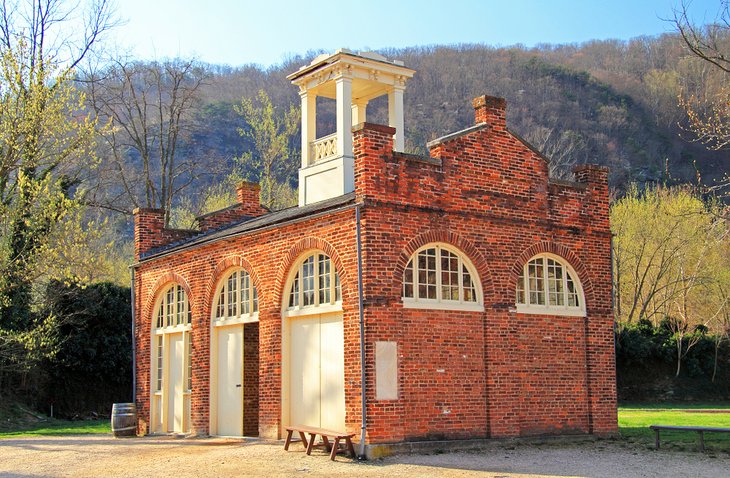
The Shenandoah River meets the Potomac River at this small West Virginia town, which was the site of abolitionist John Brown's raid on the United States arsenal in 1859, an event that hastened the onset of the Civil War.
Harpers Ferry National Historical Park has museums, historical exhibits, and programs, plus about 20 miles of hiking trails. You can explore the rocks where the rivers meet and walk up to St. Peter's Roman Catholic Church and the old cemetery on the hill behind it.
Also in Harpers Ferry is the Appalachian Trail Visitors Center, from which you can take a hike on the Appalachian Trail for views of the town and rivers. Local outfitters offer tubing excursions in the river.
West Virginia Penitentiary
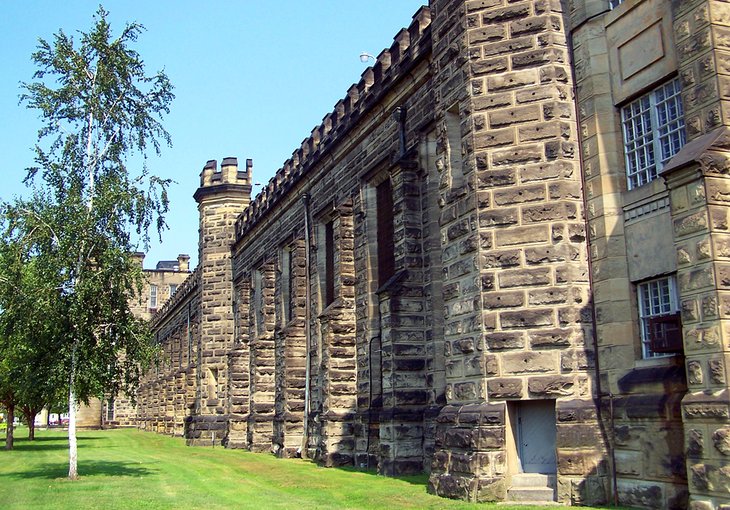
One of the most unlikely places to visit in any state, the West Virginia Penitentiary welcomes guests from April through November to tour the grim prison that sometimes held more than 1,000 prisoners at a time. The forbidding Gothic fortress opened in 1876, and the last prisoner left in 1995. Between those dates it was the scene of fires, escapes, prison riots, and almost 100 executions.
Visitors can tour the building and its claustrophobia-inducing five-foot by seven-foot cells during the day, or explore the reportedly haunted location at night. The penitentiary is a popular place for paranormal researchers looking for evidence of spectral phenomena.
Address: 818 Jefferson Ave, Moundsville, West Virginia
Official site: http://www.wvpentours.com
Mothman Museum and Festival
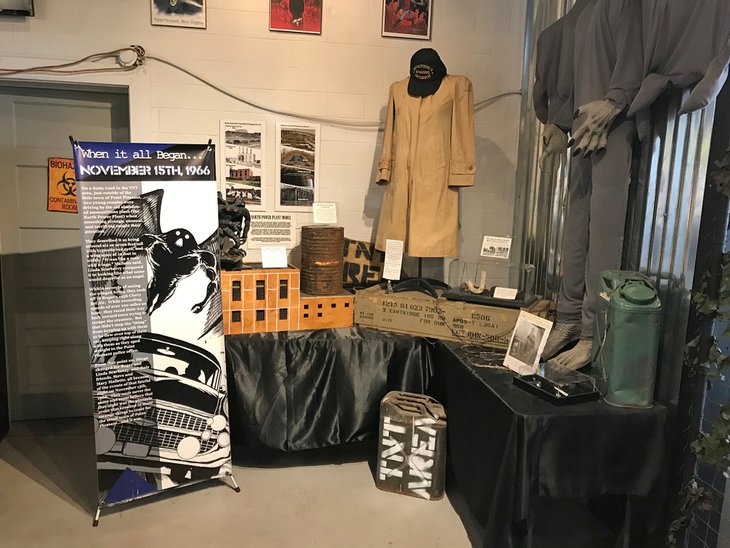
In 1966, reports of lights in the sky and a strange flying figure began circulating in Point Pleasant, West Virginia. The figure was variously described, but most reported a winged human figure dressed in black, with red eyes. From there arose the local legend of Mothman.
Pop culture took up the myth as the story spread (there's even an exhibit on Mothman at the International Cryptozoology Museum in Portland, Maine) and the town turned the legend into a museum, a statue, and a Mothman Festival. The popular free event is held on the third weekend in September and features costumes, activities, and vendors selling souvenirs depicting a bat-like cartoon Mothman.
Address: 400 Main Street, Point Pleasant, West Virginia
Official site: www.mothmanmuseum.com
Cass Scenic Railroad State Park
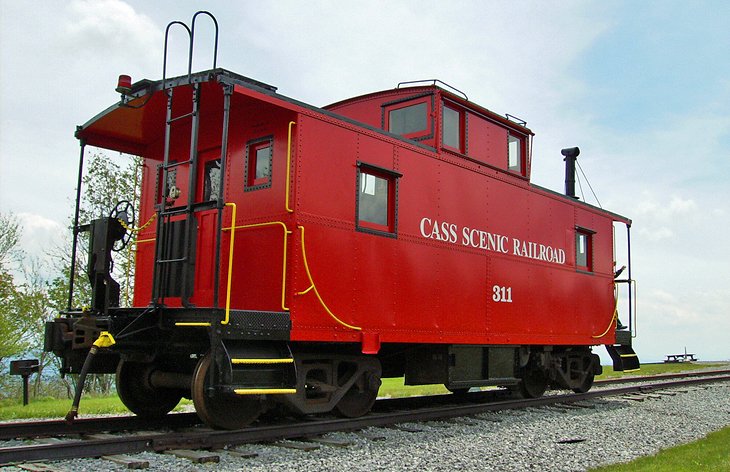
At the Cass Scenic Railroad State Park, you can relive the Golden Age of Steam on a line built in 1901 to haul lumber from the forest to the mill, riding in refurbished logging flat-cars pulled by an original Shay steam locomotive. The full 4.5-hour trip includes switchbacks that allow the train to climb grades as high as 11 percent to reach Bald Knob. At an altitude of 4,700 feet, this is West Virginia's third highest point, overlooking spectacular views.
At Whittaker Station, a 1940s logging camp has been recreated, with the living quarters and the equipment. At the base, you can tour a museum and the depot and see restored company houses that can be rented for overnight stays. On the train ride, be prepared for noise, black smoke, and chilly temperatures at Bald Knob.
Official site: www.cassrailroad.com
West Virginia State Museum at the Culture Center
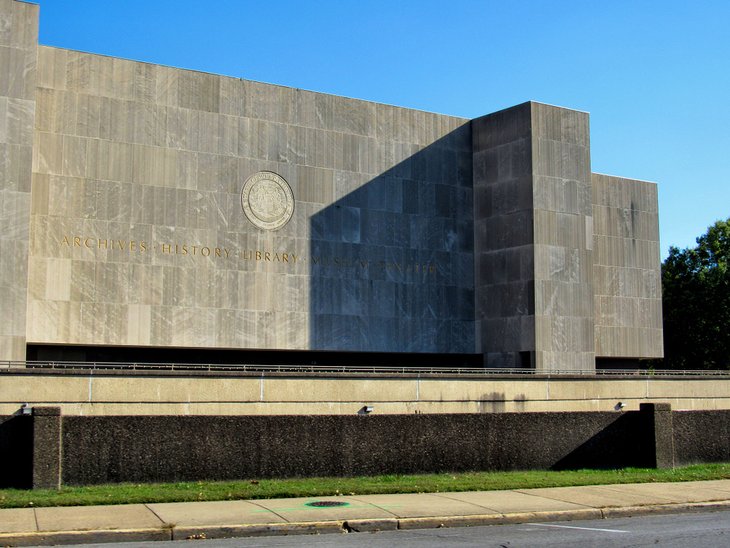
Among the free things to do in West Virginia is touring the West Virginia State Museum in Charleston to learn about the state's culture, history, art, paleontology, archaeology, and geology. One of the most popular of its 60,000 artifacts is a pair of dressed fleas from a 19th-century flea circus.
Well-designed exhibits of a more serious nature literally follow a path through the state's history, beginning with stone and dirt and ending in a paved highway. As visitors progress from room to room through the centuries, audio features augment exhibits and films.
Artifacts include everyday implements and items such as a telescope that George Washington used to survey land in West Virginia. In one section, you'll learn more about John Brown's raid at Harpers Ferry, and elsewhere is an original settler's cabin reconstructed in the museum.
Address: 1900 Kanawha Blvd E, Charleston, West Virginia
Explore Seneca Caverns
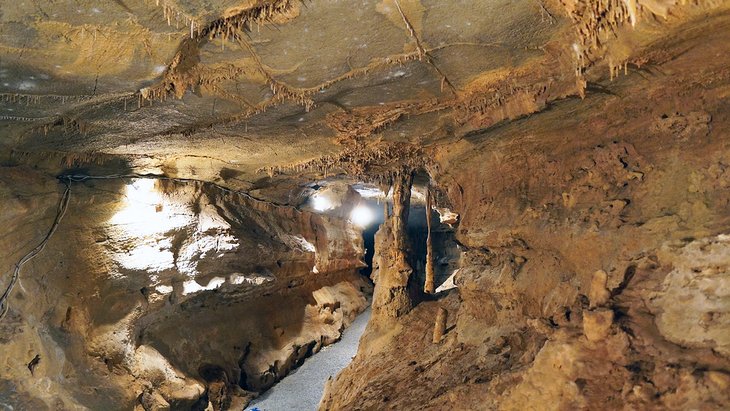
The formation of Seneca Caverns began 460 million years ago, when the cavern's limestone bed first formed. The native Seneca people are thought to have used the caves for shelter beginning in the early 1400s.
The caverns were later found by a local farmer, Laven Teter, while looking for water for his livestock, and the largest chamber, rising to 60 feet in places, is named Teter Hall in his memory.
You can visit these on one-hour guided tours that descend to 165 feet below the entrance. Pathways are well-lit, and cement steps with handrails help visitors navigate deeper into the caverns. The separate Stratosphere Cave is on the same property.
Address: 3328 Germany Valley Road, Riverton, West Virginia
Official site: http://www.senecacaverns.com
Huntington Museum of Art & Ritter Park
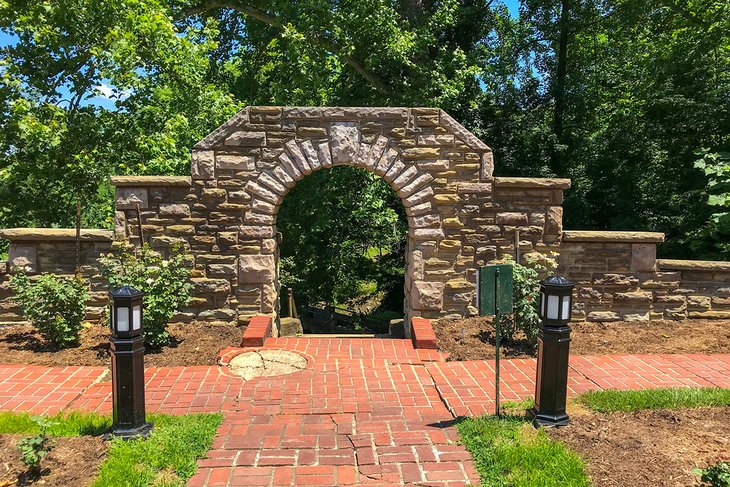
In addition to its 10 exhibition spaces, the Huntington Museum of Art maintains an interactive education gallery, a 287-seat auditorium, a conservatory for tropical and subtropical plants, a coral reef aquarium, two outdoor sculpture gardens, and two miles of hiking and nature trails. A quarter-mile paved accessible Sensory Trail is designed for the visually impaired.
Outstanding in its permanent collections of more than 16,000 objects are 4,000 pieces of glassware and the Touma Near Eastern Gallery, encompassing art from the Middle East, Ottoman Turkey, Central Asia, the Indian sub-continent, North Africa, and Moorish Spain.
Highlighting the Ritter Park Historic District is a 75-acre park with a walking, jogging, and biking trail and a garden of more than 3,000 roses that is considered one of the best rose gardens in America.
Address: 2033 McCoy Road, Huntington, West Virginia
Official site: https://www.hmoa.org
Beckley Exhibition Coal Mine
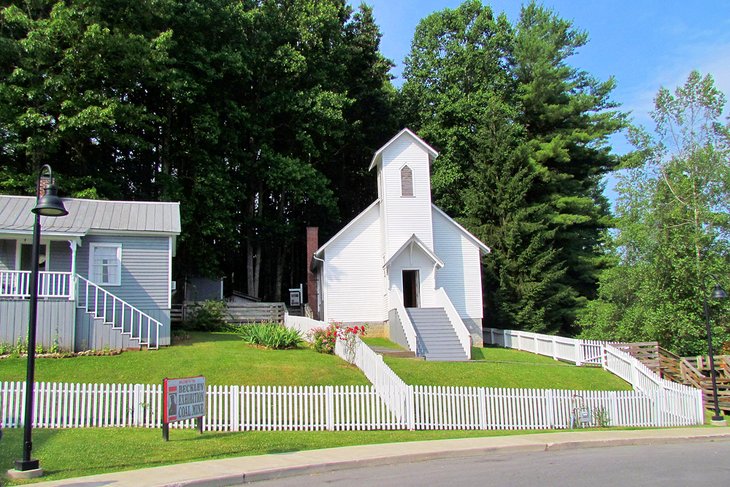
Coal mining is central to both the history and economy of West Virginia, especially in the region around Beckley. You can tour one of these mines, going deep underground in a cart that once carried the miners to work daily. Guided by a miner who tells about the work here, the tour gives you a feel for the lives of those who spent their daylight hours in these dark passages.
A recreated coal camp with the Coal Company House, superintendent's house, a church, and the school depict an early 20th-century coal camp. The adjacent Mountain Homestead recreates a 19th-century Appalachian frontier settlement, with a log home, barn, blacksmith shop, one-room schoolhouse, and general store. A Youth Museum has changing interactive exhibits.
Address: Ewart Ave., Beckley, West Virginia
Official site: https://beckley.org/coal-mine/
Grave Creek Burial Mounds
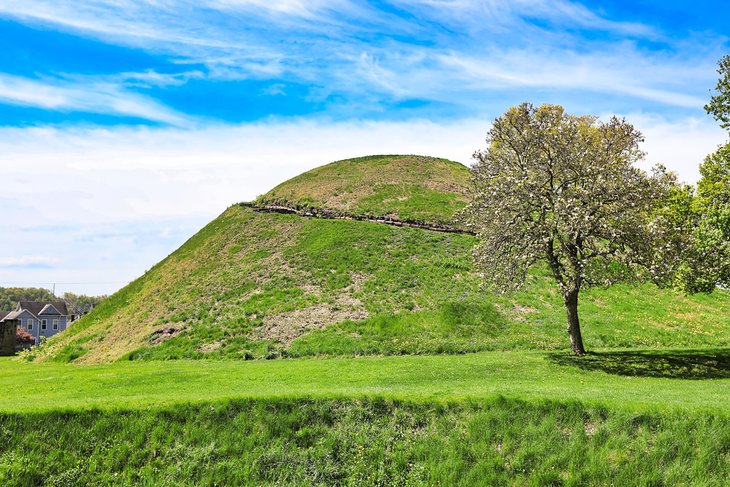
One of the free things to do in West Virginia, and one of its secret places, is also one of the most intriguing, a glimpse into a culture that thrived here 2,000 years ago. Grave Creek Archaeological Complex, near Wheeling, centers on the largest known burial mounds of the Adena people, built about 250-150 BC.
These mounds, as high as 62 feet and nearly 250 feet at the base, required moving more than 60,000 tons of earth, creating the largest conical type structure of any of the mound-building cultures.
The Delf Norona Museum on the site displays some of the nearly 450,000 artifacts found in the multi-level burial site and elsewhere in the area. The exhibits illuminate the lives of these prehistoric people and the construction of the mounds.
Address: 801 Jefferson Avenue, Moundsville, West Virginia
Cathedral Falls
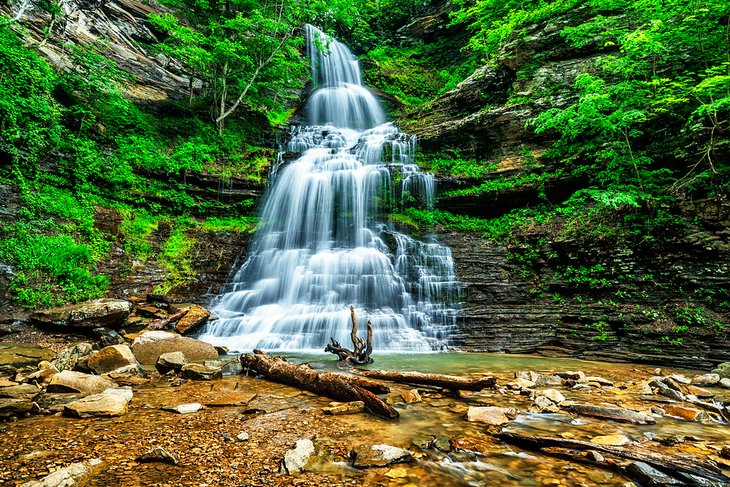
Cane Brook joins New River a short distance east of Gauley Bridge, but before it does, the stream drops more than 100 feet from the mountains above. The lower 60 feet of its plunge are visible from a roadside stop on Route 60.
The water cascades down a canyon it has cut through the forested mountainside, dropping in a long series, splashing into a veil of foam at each successive level as it falls over the sandstone ledges. The waterfall, with its setting amid overhanging foliage, is a favorite for photographers, especially in the fall when the hardwoods are in their autumn colors.
Along with being one of the most beautiful waterfalls in West Virginia, Cathedral Falls is also the most accessible, with a roadside viewing area.
Location: Route 60, Gauley Bridge, West Virginia
West Virginia State Capitol
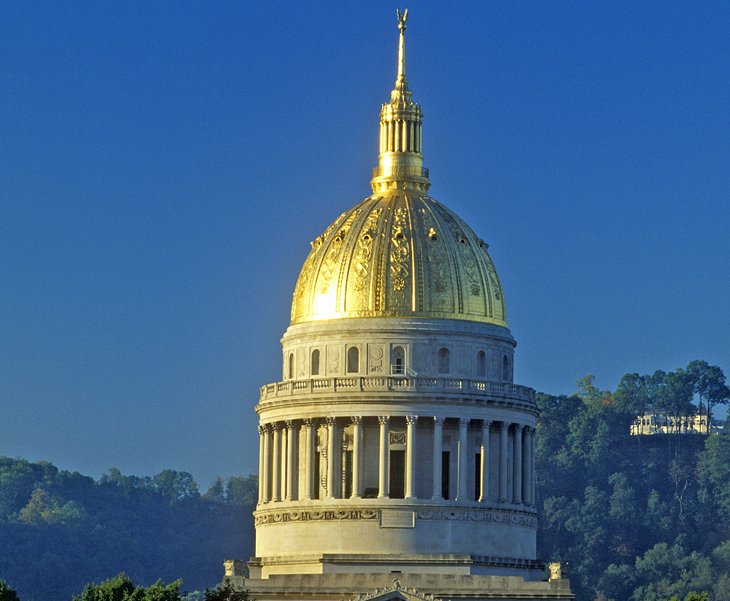
Five feet higher than the dome of the US Capitol Building in Washington, D.C., the 293-foot golden dome at the State Capitol in Charleston reflects Greek and Roman architectural influences. It was designed by Cass Gilbert, who also designed the Woolworth Building in New York City, the world's tallest building when it was constructed.
During the building process, from 1924 to 1932, more than 700 train carloads of Indiana limestone were used. White marble from Vermont and Italian travertine sheath much of its interior, which you can tour daily.
Trans-Allegheny Lunatic Asylum

As unconventional a tourist attraction as the West Virginia Penitentiary, the Trans-Allegheny Lunatic Asylum is a landmark in the history of treatment for the mentally ill. Constructed between 1858 and 1881, the asylum is the largest hand-cut stone masonry building in the hemisphere, and in the world it is exceeded only by the Kremlin in Moscow.
It was designed by the architect Richard Andrews, who arranged the long rambling wings in a staggered formation, so that each of the connecting structures received as much therapeutic sunlight and fresh air as possible.
Tours highlight a number of historical themes, including architecture, Civil War raids, treatment of the mentally ill, even the facility's agricultural history and place in the local community. Like the West Virginia Penitentiary, the asylum has also been a research location for paranormal investigators.
Official site: http://trans-alleghenylunaticasylum.com
More Related Articles on PlanetWare.com

More on West Virginia: For a luxurious and relaxing vacation, consider staying at one of the top resorts in West Virginia or enjoying some of the state's many outdoor attractions. If you have time to tack on one more stop during your trip, consider visiting the attractions of Charleston, West Virginia.
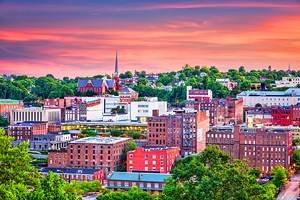
Where to Go Next: Bordering West Virginia on the east and south, the historic state of Virginia is scattered with charming small towns and other places for relaxing weekend getaways.


